Invented by Nan Ding, Masoud MOHSENI, Hartmut Neven, Google LLC
Probabilistic inference is a fundamental concept in machine learning that involves making predictions or decisions based on uncertain or incomplete data. Traditional machine learning algorithms rely on classical computing techniques to perform probabilistic inference, which can be computationally expensive and limited in their ability to handle complex problems. However, the advent of quantum computing has opened up new possibilities for tackling these challenges.
A quantum oracle is a powerful tool in quantum computing that allows for the efficient evaluation of complex functions. It can be thought of as a black box that takes in inputs and produces outputs based on a specific function. In the context of probabilistic inference, a quantum oracle can be used to represent and manipulate probabilistic distributions, enabling more accurate and efficient inference algorithms.
One of the key advantages of using a quantum oracle in probabilistic inference is the ability to handle large-scale data sets and complex models. Quantum computers have the potential to perform calculations in parallel, allowing for faster and more efficient processing of data. This can significantly reduce the computational burden associated with probabilistic inference, enabling researchers and businesses to analyze and make decisions based on large and complex data sets in real-time.
Furthermore, quantum oracles have the potential to improve the accuracy of probabilistic inference algorithms. Quantum computing principles, such as superposition and entanglement, can be leveraged to represent and manipulate probabilistic distributions in a more precise and nuanced manner. This can lead to more accurate predictions and decisions, especially in scenarios where the data is noisy or uncertain.
The market for probabilistic inference in machine learning using a quantum oracle is still in its early stages, but it is expected to grow rapidly in the coming years. Several startups and research institutions are already exploring the potential of quantum oracles in various domains, including finance, healthcare, and logistics. These applications range from optimizing investment portfolios and drug discovery to supply chain management and fraud detection.
However, there are still several challenges that need to be addressed before the market for probabilistic inference using a quantum oracle can reach its full potential. Quantum computing technology is still in its infancy, and there are significant technical and engineering hurdles that need to be overcome to build reliable and scalable quantum computers. Additionally, there is a need for developing robust algorithms and software frameworks that can effectively utilize the power of quantum oracles for probabilistic inference.
In conclusion, the market for probabilistic inference in machine learning using a quantum oracle holds immense promise for transforming the way we analyze and make decisions based on complex data. The ability to handle large-scale data sets, improve accuracy, and perform real-time analysis can have far-reaching implications across various industries. While there are still challenges to overcome, the rapid advancements in quantum computing technology and the growing interest from researchers and businesses indicate a bright future for this emerging field.
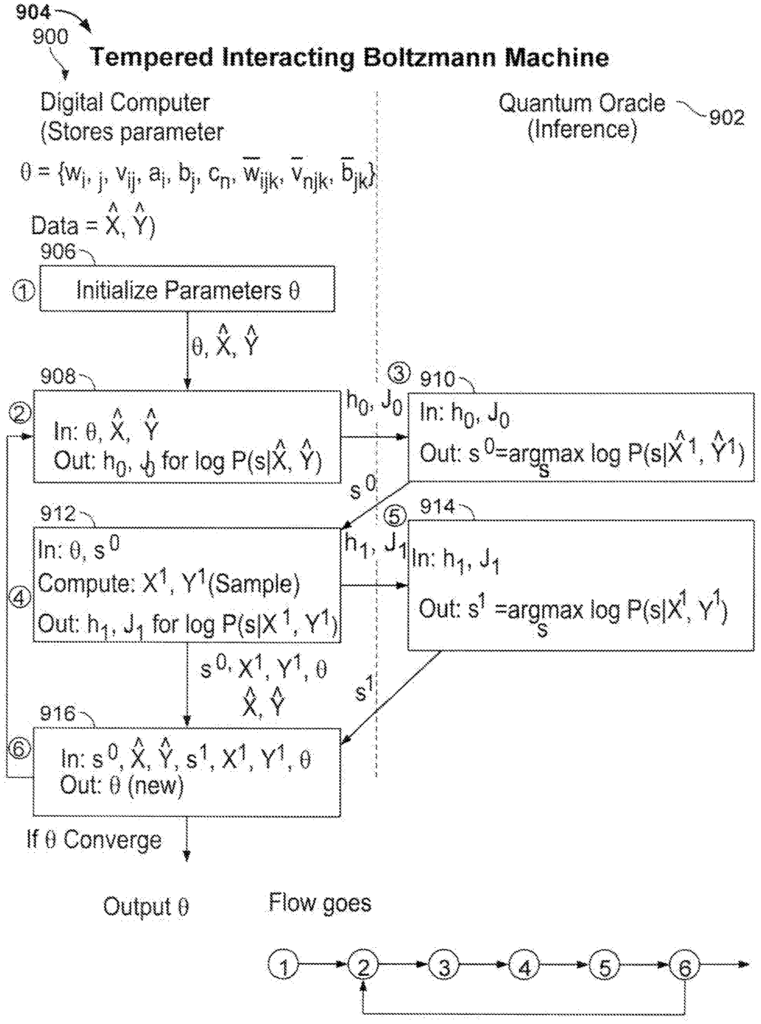
The Google LLC invention works as follows
Methods and systems, including computer programs stored on computer storage media for using a quanta oracle in machine learning models capable of solving artificial intelligence problems. The input to the quantum-oracle comes from the model parameters and training data, which map at least part the interactions between interconnected units in the model onto the interactions among qubits within the quantum oracle. The output from the quantum oracle determines values that are used to compute values for loss function values, loss function gradient values, or both during a learning process.
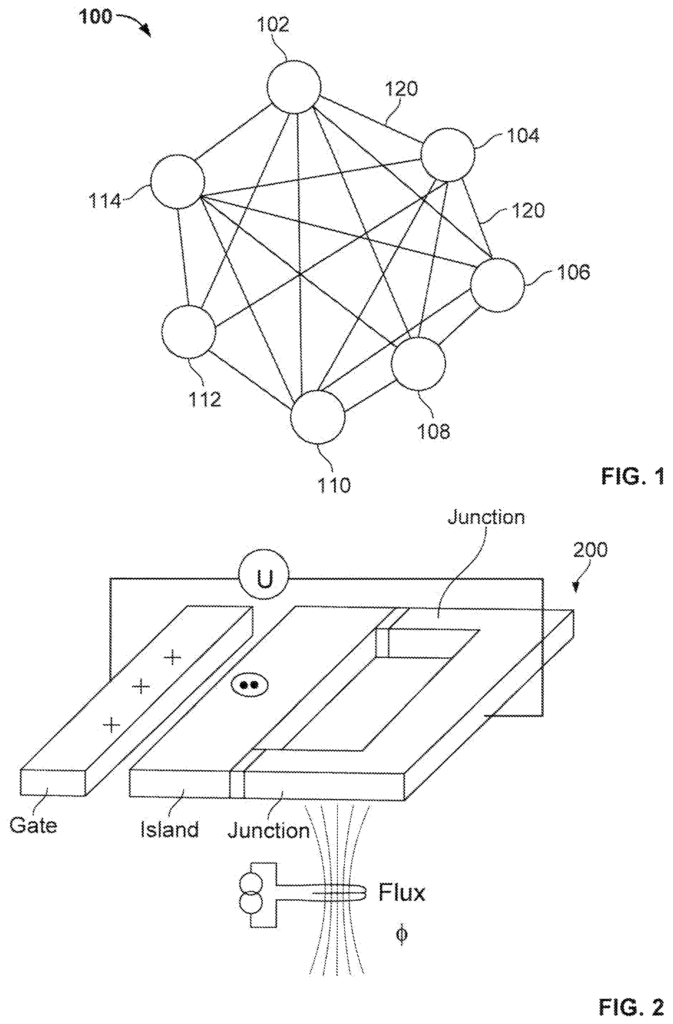
Background for Probabilistic Inference in Machine Learning Using a Quantum Oracle
This specification is about using a quantum oracle for probabilistic inferences in machine learning models such as Boltzmann Machines and undirected graphic models.
The core of machine learning and artificial intelligence problems is to build a parametric machine, such as a Boltzmann or undirected graphical models, using observed training data. This may include input features and labels. A quantum oracle can be used to make probabilistic inferences during the training process. The input to the quantum-oracle is generated from the training data, the model parameters and at least a part of the interconnectedness of the units in the model. This maps the interactions between the qubits of the quantum-oracle to at least a portion of those interactions. The output from the quantum oracle determines values that are used to compute values for loss function values, loss function gradients or both during training. Quantum oracles can also be used to infer during the prediction phase, that is, the performance stage. During this stage, the loss functions of the different candidate output labels will be compared.
The accompanying drawings, as well as the following description, provide details on one or more embodiments. The description, drawings and claims will reveal other features, aspects and advantages.
DESCRIPTION of Drawings
FIG. “FIG.
FIG. “FIG.
FIG. “FIG.
FIG. “FIG.
FIG. “FIG.
FIG. “FIG.
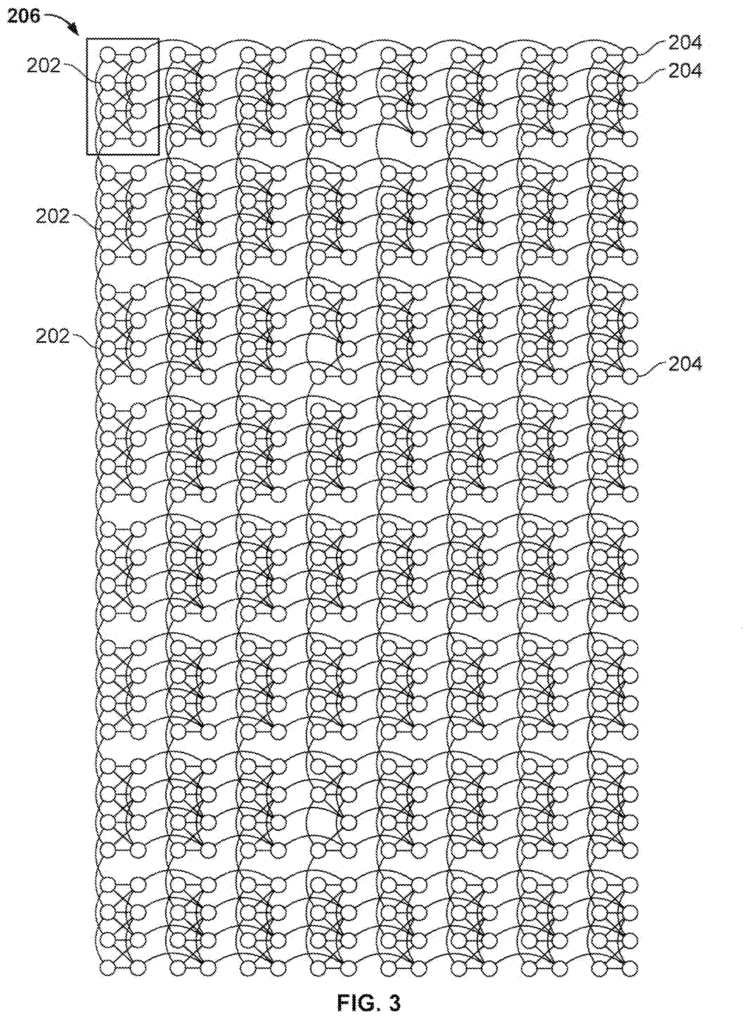
FIG. “FIG.
FIG. “FIG.
FIG. “FIG.
FIG. “FIG. 9 is a flow chart of an example learning process in a tempered Boltzmann Machine.
FIG. “FIG. 10 is a flow chart of an example learning process in an undirected graphic model with latent variable.
Overview
Computer models can be taught to solve interesting and difficult problems. For example, they can be trained to handle a variety of machine learning issues, such as pattern matching, classification, image recognition, speech recognition, voice recognition, object recognition, etc.
Boltzmann machines or stochastic recurrent networks are examples of useful models. During the training process, the model parameters are selected to ensure that the model is able to fit the observed data of any problem. The size, complexity, or both of the model may make it computationally impossible to train the model. The time required to collect equilibrium stats for probabilistic inference, for example, can increase exponentially as the model size increases (e.g. number of units or parameters in a network).
This specification describes how a quantum machine can be used for training a model. It is particularly useful when the probabilistic inference or a part of a model is computationally difficult. As will be explained, a quantum oracle is implemented by using a quantum computer. A quantum machine that can be used as an example is the D-Wave superconducting quantum computing system (AQC), available from D-Wave Systems Inc. in British Columbia, Canada. Quantum oracles can be created using alternative quantum processors. These processors are capable of performing universal AQC, without being restricted by 2-local stochastic hamiltons. They can also perform arbitrary and universal quantum operations within the adiabatic domain. Some quantum processors are based on discrete logic gates and can compute using a circuit model. Examples include trapped ion systems (e.g. neutral atoms or phase qubits), integrated photonic circuits (e.g. nitrogen-vacancy diamonds), solid-state NMR systems (nuclear magnet resonance systems), and quantum dots.
In general, the input for the quantum machine comes from the model that is to be trained, as well as the training data. The quantum machine then outputs the desired equilibrium stats of the trained model. In order to derive the input, the model structure and the quantum machine’s physical structure are taken into account. The input for the D-Wave System is in QUBO format (Quadratic Undconstrained Binary Optimizing). The quantum machine is then given a QUBO-formatted problem to solve. Exact inference can be made, for example, if an undirected graph has the same connectivity as a quantum machine’s hardware (e.g. the D-Wave System). In some implementations, for example, when the graph is densely connected, such as the Boltzmann system, the quantum computer (e.g. the D-Wave System) is used in part to infer the model.
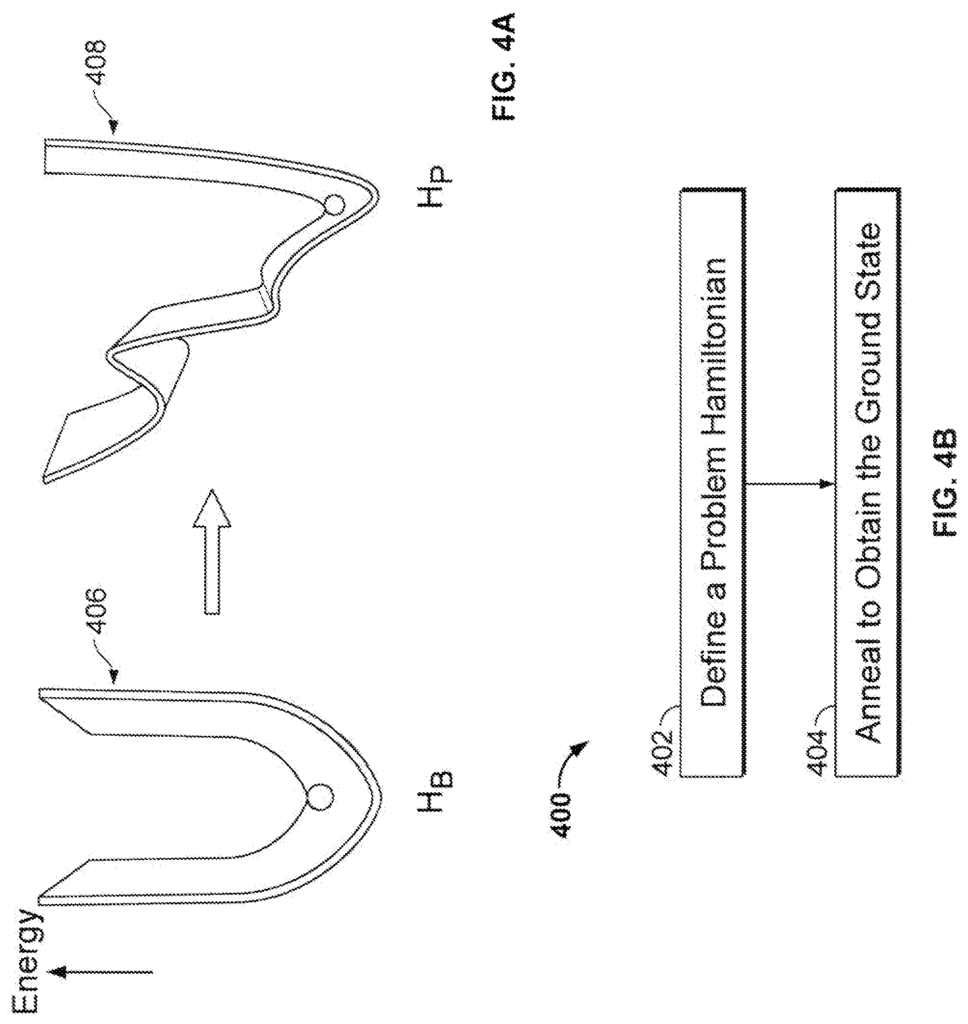
In some cases, a quantum oracle can be used to minimize a loss function for the model that is being trained.
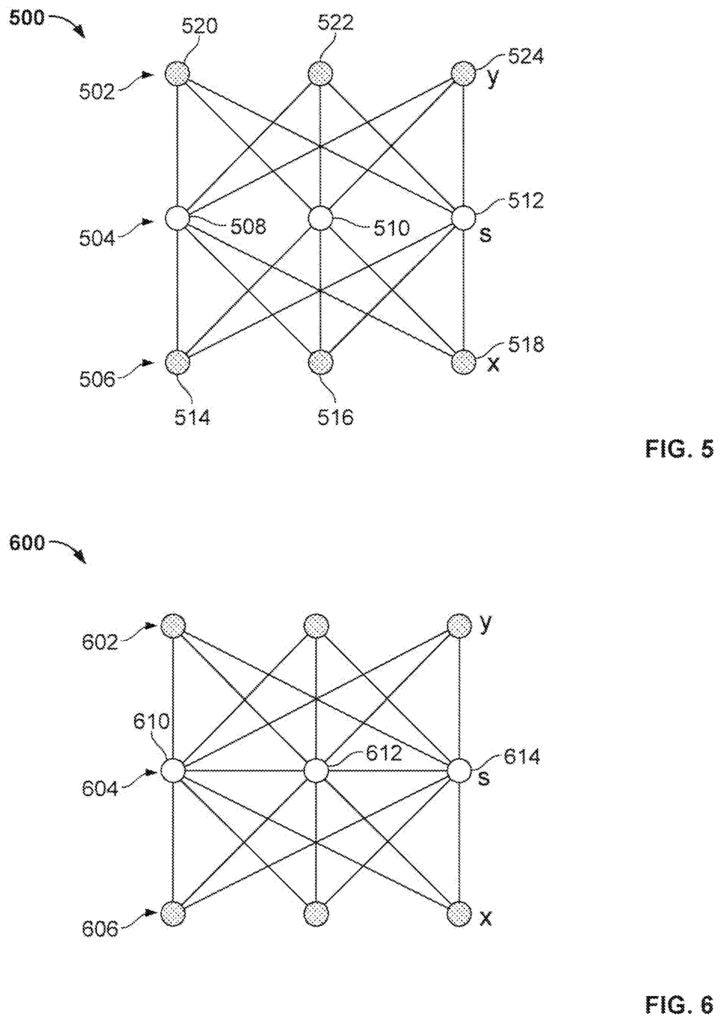
Click here to view the patent on Google Patents.
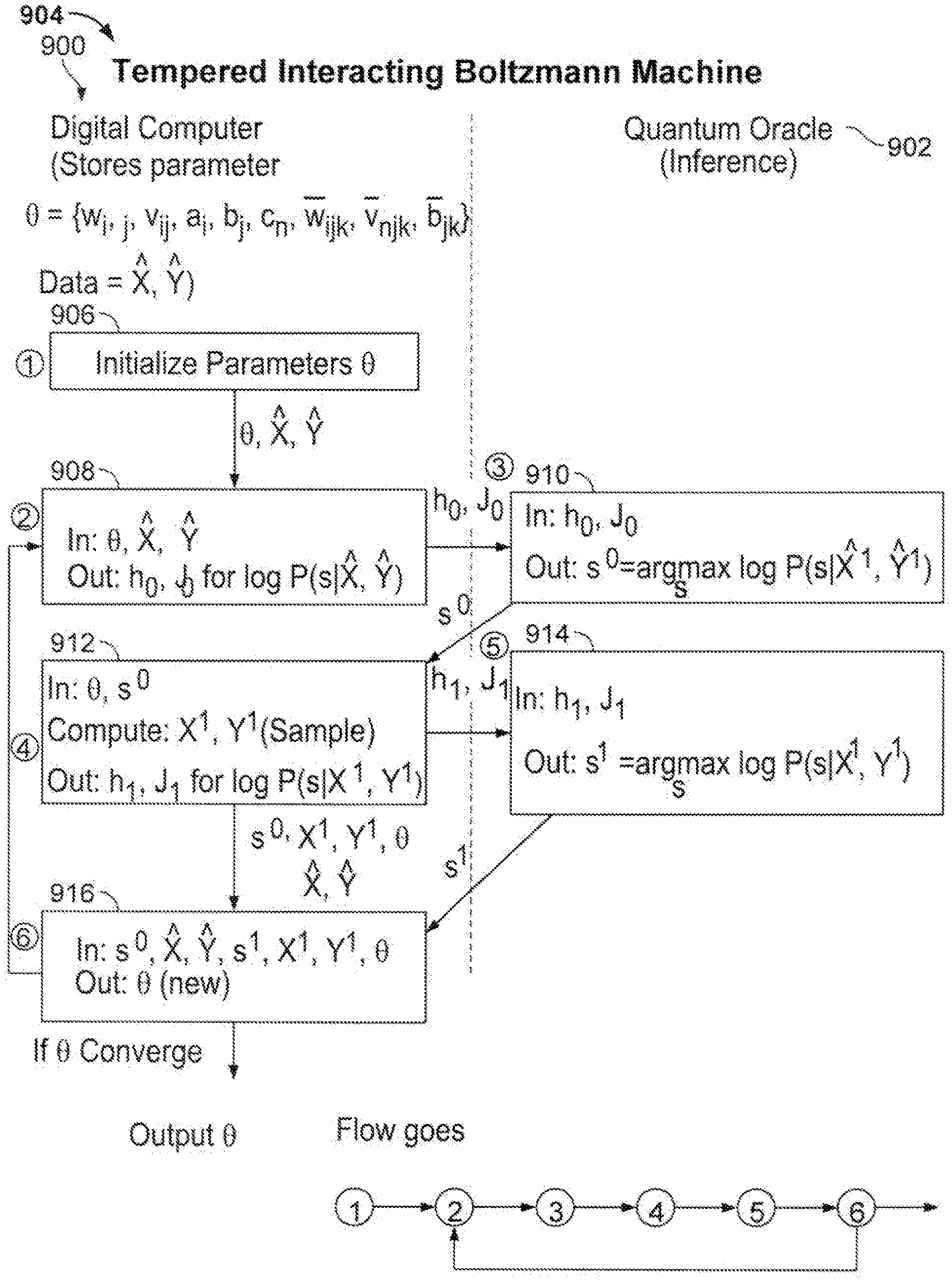
Leave a Reply